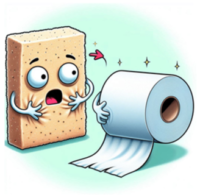Hard White Paper
The “hard white” paper was a rag content paper used by both the National and Continental Bank Note Companies (#134-181). This is sometimes referred to as a thin to thick white wove paper on the 1870 to 1873 printings, and a yellowish wove paper on the 1875 printings.
Soft Porous Paper
The “soft porous” paper was a wood pulp paper used by the Continental Bank Note Company briefly in late 1878 to early 1879, and by the American Bank Note Company for all 1879 and later printings (#182-218). Because the American Bank Note Company took over the Continental Bank Note Company in 1879, including plates, paper and finished stamps, the soft porous paper is generally attributed to American Bank Note printings. All stamps issued between 1879 and 1894 were printed by the American Bank Note Company on this paper.
The “hard white” paper was a rag content paper used by both the National and Continental Bank Note Companies (#134-181). This is sometimes referred to as a thin to thick white wove paper on the 1870 to 1873 printings, and a yellowish wove paper on the 1875 printings.

Identification
There are two methods to identify the paper type, and occasionally it may be necessary to use both methods since one type of paper may show characteristics of the other type. To learn the paper types, it is easiest to begin with stamps of a known paper type. Any grilled issue and any stamp from the 1869 series will be on thin hard paper, while the 1890 Small Bank Note stamps and the Columbians will be on soft porous paper.
Easiest Method: The Flick Test
The traditional test is to flick the stamp close to your ear. Hold the stamp between your thumb and index finger, leaving about a half an inch protruding, and snap the stamp back and forth with the flick of a finger. Hard paper gives a sharp, loud sound, while soft paper gives a duller, less audible sound. However, this test is not terribly accurate and care must be taken to not damage the stamp.
More Accurate Method: Examination Under a Strong Light
Hold the stamp up to a strong light and examine a clear portion of the stamp, such as the margins, at various angles. The hard paper is translucent and has an even texture throughout, and is usually white. The soft paper appears mottled and opaque, with fibers typically bunched in a screen or mesh pattern, and is usually yellowish. Also, when viewed from the back, the design tends to show through on the hard paper.
| Thin hard paper | Soft porous paper |
|---|---|
 |  |
Source: Kenmore Stamp Company

